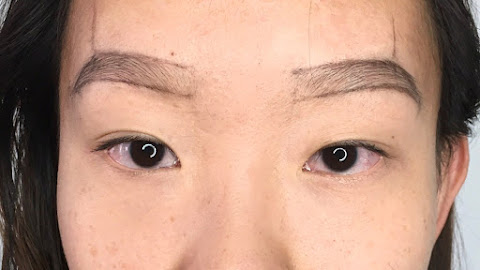Microblading has emerged as a popular beauty trend, offering a semi-permanent solution for those looking to enhance their eyebrows. The allure of perfectly shaped brows has led many to seek out this beauty treatment, but with its growing popularity comes the need for effective budgeting. Understanding how Microblading cost in Dubai can help you achieve those stunning brows while still being financially savvy.
Understanding Microblading
Microblading is a technique that involves using a specialized tool to deposit pigment into the skin, creating hair-like strokes that fill in sparse or uneven brows. This process provides a natural look that can last anywhere from one to three years, depending on skin type, aftercare, and environmental factors. The technique is particularly appealing to those who want to save time on their daily makeup routine or those who struggle with naturally thin or sparse eyebrows.
Factors Influencing Microblading Costs
When budgeting for microblading, it’s essential to consider the various factors that can influence the overall cost. These factors include the experience and reputation of the technician, the geographic location of the salon, and the products used during the procedure. More experienced technicians often charge higher rates due to their expertise and the quality of their work, while salons in metropolitan areas may have higher prices than those in smaller towns.
Additionally, the type of products used can also affect the overall cost. High-quality pigments and tools can lead to better results and longer-lasting brows, so it’s worth considering the materials when selecting a technician. As a result, it’s crucial to do thorough research to find a reputable technician who fits your budget without compromising quality.
Creating a Microblading Budget
To effectively budget for microblading, begin by determining how much you are willing to spend on the procedure. Setting a budget will help you narrow down your options and find a technician who meets your financial needs. Research local salons and technicians, and consider their prices and reviews from previous clients. This will give you an idea of what to expect in terms of costs and help you make an informed decision.
Once you have a budget in mind, factor in additional expenses. Microblading often requires a touch-up session within a few weeks after the initial procedure to ensure optimal results. It’s also essential to account for aftercare products and any follow-up appointments needed to maintain the longevity of the results. By considering these additional costs, you can create a comprehensive budget that covers everything from the initial treatment to maintenance.
Saving on Microblading Costs
While microblading can be an investment, there are several strategies you can use to save money without sacrificing quality. One way to save is to look for promotional offers or discounts at local salons. Many salons offer introductory rates for new clients or seasonal promotions that can significantly reduce the cost of the procedure.
Another option is to consider group discounts. If you and a few friends are interested in getting microblading done, check with local technicians to see if they offer discounts for group bookings. This approach can help you save money while still enjoying a fun experience with friends.
Additionally, consider scheduling your appointment during off-peak times. Many salons have slower periods during the week, and booking your appointment during these times can sometimes lead to lower rates.
The Importance of Research
Thorough research is key when budgeting for microblading. Don’t hesitate to reach out to multiple technicians to ask questions about their services, pricing, and experience. Reading reviews and testimonials from previous clients can provide valuable insight into the quality of work and the overall experience you can expect.
When researching technicians, also consider checking their portfolios to see examples of their previous work. This can help you gauge their skill level and determine if their style aligns with your desired outcome. The more informed you are, the better equipped you’ll be to make a decision that fits your budget and aesthetic preferences.
Planning for Aftercare Costs
Aftercare is a crucial aspect of the microblading process and can significantly impact the longevity of your results. Aftercare products, such as healing ointments, can add to the overall cost of the procedure. However, investing in high-quality aftercare products is essential for maintaining the appearance of your brows and ensuring proper healing.
Be sure to factor these additional costs into your budget. It’s also worth checking with your technician for recommendations on the best aftercare products to use, as they may have specific brands they trust that can enhance the healing process.
Conclusion
Budgeting for microblading costs requires careful consideration and planning. By understanding the factors that influence prices, creating a detailed budget, and exploring saving opportunities, you can achieve beautifully shaped brows without breaking the bank. With the right approach, you can enjoy the benefits of microblading while maintaining financial stability. Prioritize research, explore promotional offers, and plan for aftercare to ensure that your investment in your beauty is both rewarding and budget-friendly.






.jpg)



